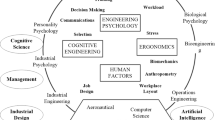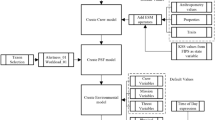Abstract
This main objective of this paper was to assess and model variability of task performance relevant to human-systems integration efforts in naval ship operations, including the estimation of task execution times under generic task conditions. A method was developed for quantifying and modeling human operator execution times in selected naval ship operations. The proposed method is based on time contributions for each task component with due consideration of three core task performance elements: skills, knowledge and task requirements. The experimental analysis utilized a hybrid approach based on linear regression, weighted scoring method and artificial neural networks. The proposed modeling approach demonstrates promising results for developing a realistic solution for assessment of task performance times relevant to training requirements and total ownership cost for competing technology upgrades, with emphasis on maintaining manpower readiness and mitigating possible performance degradation due to unforeseen mission conditions.
Access this chapter
Tax calculation will be finalised at checkout
Purchases are for personal use only
Similar content being viewed by others
References
Chen, J.Y., Joyner, C.T.: Individual differences in concurrent performance of Gunner’s and robotic operator’s tasks. In: Proceedings of the Human Factors and Ergonomics Society 50th Annual Meeting, pp. 1759–1763. Human Factors and Ergonomics Society, San Francisco (2006)
Stanton, N.A., Baber, C.: Modelling of human alarm handling response times: a case study of the Ladbroke Grove rail accident in the UK. Ergonomics 51(4), 423–440 (2008). doi:10.1080/00140130701695419
Hick, W.E.: On the rate of information gain. Q. J. Exp. Psychol. 4, 11–26 (1952)
Hyman, R.: Stimulus information as a determinant of reaction time. J. Exp. Psychol. 45(3), 188–196 (1953)
Fitts, P.M.: The information capacity of the human motor system in controlling the amplitude of movement. J. Exp. Psychol. 47, 381–391 (1954)
Chan, A.H., Shum, V.W., Law, H.W., Hui, I.K.: Precise effects of control position, indicator type, and scale side on human performance. Int. J. Adv. Manufact. 22, 380–386 (2003). doi:10.1007/s00170-002-1491-z
Rasmussen, J.: Risk management in a dynamic society: a modeling problem. Saf. Sci. 27, 183–213 (1997)
Salvendy, G. (ed.): Handbook of Human Factors and Ergonomics. Wiley, New York (1997)
Marras, W.S., Hancock, P.A.: Putting mind and body back together: a human systems approach to the integration of the physical and cognitive dimensions of task design and operations. Appl. Ergon. 45(1), 55–60 (2014)
De Waard, D.: The Measurement of Drivers’ Mental Workload. Ph.D. Thesis, The Traffic Research Centre VSC, University of Groningen, The Netherlands (1996)
Warm, J.S., Dember, W.N., Hancock, P.A.: Vigilance and workload in automated systems. In: Parasuraman, R., Mouloua, M. (eds.) Automation and Human Performance: Theory and Applications. Erlbaum, Mahwah (1996)
Krebs, W.: ONR Presentation for Ideal Observer (2013)
Acknowledgements
This research was sponsored by the Office of Naval Research Contract No. N00014-14-1-0777. Authors would like to acknowledge the support of Dr. William Krebs and Program Management.
Author information
Authors and Affiliations
Corresponding author
Editor information
Editors and Affiliations
Rights and permissions
Copyright information
© 2018 Springer International Publishing AG
About this paper
Cite this paper
Ahram, T., Karwowski, W., Muhs, K. (2018). Human Performance Variability in Task Execution Times Under Generic Human-System Integration Conditions in Naval Operations. In: Boring, R. (eds) Advances in Human Error, Reliability, Resilience, and Performance. AHFE 2017. Advances in Intelligent Systems and Computing, vol 589. Springer, Cham. https://doi.org/10.1007/978-3-319-60645-3_17
Download citation
DOI: https://doi.org/10.1007/978-3-319-60645-3_17
Published:
Publisher Name: Springer, Cham
Print ISBN: 978-3-319-60644-6
Online ISBN: 978-3-319-60645-3
eBook Packages: EngineeringEngineering (R0)




